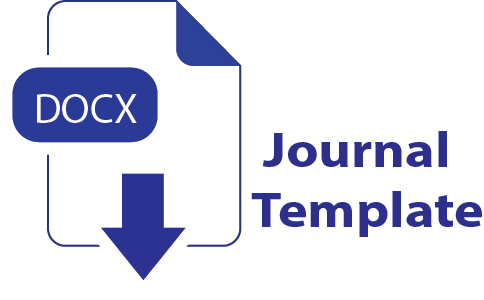PENGEMBANGAN DASHBOARD CERDAS UNTUK MONITORING DATA PASIEN RAWAT RUMAH SAKIT UMUM DAERAH PRAYA KABUPATEN LOMBOK TENGAH
DOI:
https://doi.org/10.36595/jire.v4i1.321Keywords:
Dashboard, Monitoring, DataAbstract
Rumah Sakit Umum Daerah (RSUD) is a hospital owned by the Lombok Tengah Regency Government. RSUD Praya has a main vision as a hospital with excellent service, by prioritizing perfect, effective, efficient and friendly quality services, family-based manner with financing affordable to all levels of society. Efforts that have been made by RSUD Praya are implementing hospital information systems. In 2014 RSUD Praya has used the hospital information system (SIMRS) which was developed independently. However, the SIMRS that was developed has not been deemed effective in supporting business processes at RSUD Praya. In mid-2019 to date, RSUD Praya has carried out a system migration. The system migration from the old SIMRS to SIMRS Khanza presented obstacles in integrating data. One reason is that the two hospital information systems were developed by different developers. Therefore, the data contained in each Database is different. This difference creates a gap when it comes to analyzing patient data simultaneously from 2014 to the present. Gap analysis between the two hospital information systems at RSUD Praya cannot reflect good data management. One of the efforts to overcome the gap analysis is to build a data warehouse. The development of a data warehouse and dashboard is the right effort if you look at the size of the data records stored in the two SIMRS Databases used at RSUD Praya. The test results on the dashboard system that were developed simultaneously were as much as 86% with each measured assessment was a system quality assessment of 86%, an assessment of information quality by 88%, and an assessment of system service quality by 85% of the test results it can be concluded that the system is sufficient. assist in supporting the performance of data processing at RSUD Praya. With the dashboard system developed at RSUD Praya, stakeholders in the hospital be able to get the information and knowledge contained in the transaction data carried out at RSUD Praya easily
Downloads
References
[2] W. Raghupathi and V. Raghupathi, “Big data analytics in healthcare : promise and potential,†Heal. Inf. Sci. Systen, vol. 2, no. 3, pp. 2–10, 2014.
[3] L. Iswari, D. H. Fudholi, and S. K. Aditya, “Dashboarding the maternal and child health profiles for health supporting system,†in IOP Conference Series: Materials Science and Engineering, 2019, vol. 482, no. 1, pp. 1–11, doi: 10.1088/1757-899X/482/1/012013.
[4] N. A. Farooqui and R. Mehra, “Design of a data warehouse for medical information system using data mining techniques,†in PDGC 2018 - 2018 5th International Conference on Parallel, Distributed and Grid Computing, 2018, pp. 199–203, doi: 10.1109/PDGC.2018.8745864.
[5] Rianto and Cucu Hadis, “Perancangan Data Warehouse Pada Rumah Sakit ( Studi Kasus : BLUD RSU Kota Banjar ),†Sains dan Teknolgi, vol. 3, no. 2, pp. 214–221, 2017, [Online]. Available: http://jurnal.unsil.ac.id/index.php/jssainstek/article/view/359.
[6] P. Ziuzianski, M. Furmankiewicz, and A. Soltysik-Piorunkiewicz, “E-health artificial intelligence system implementation: Case study of knowledge management dashboard of epidemiological data in Poland,†Int. J. Biol. Biomed. Eng., vol. 8, no. 1, pp. 164–171, 2014.
[7] “Perancangan Sistem Informasi ‘DIAMONS’ (Diabetes Monitoring System) Berbasis Internet of Things (IoT),†J. Teknol., vol. 6, no. 1, pp. 39–51, 2019.
[8] A. Franklin et al., “Dashboard visualizations: Supporting real-time throughput decision-making,†J. Biomed. Inform., vol. 71, no. 1, pp. 211–221, 2017, doi: 10.1016/j.jbi.2017.05.024.
[9] R. A. Simms, H. Ping, An. Yelland, A. J. Bringer, and D. Fox, “Development of maternity dashboards across a UK health region; current practice, continuing problems,†Eur. J. Obstet. Gynecol. Reprod. Biol., vol. 170, no. 1, pp. 119–129, 2013.
[10] S. Karus and D. Toddenroth, “Using Arden Syntax for the creation of a multi-patient surveillance dashboard,†Artif. Intell. Med., vol. 92, no. 1, pp. 88–94, 2018.
[11] E. Mlaver, J. L. Schnipper, R. B. Boxer, and D. Breuer, “Dashboard, User-Centered Collaborative Design and Development of an Inpatient Safety,†Jt. Comm. J. Qual. Patient Saf., vol. 43, no. 12, pp. 676–685, 2017.
[12] R. Kimball and M. Ross, The Data Warehouse Toolkits. 2013.
Downloads
Published
How to Cite
Issue
Section
License
Semua tulisan pada jurnal ini menjadi tanggungjawab penuh penulis.













